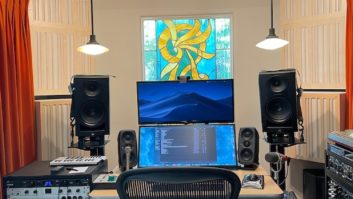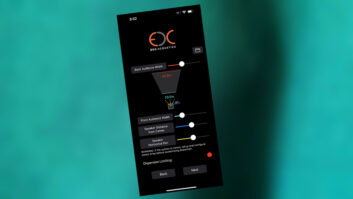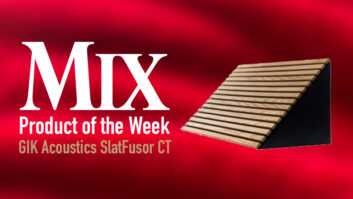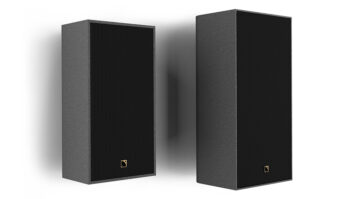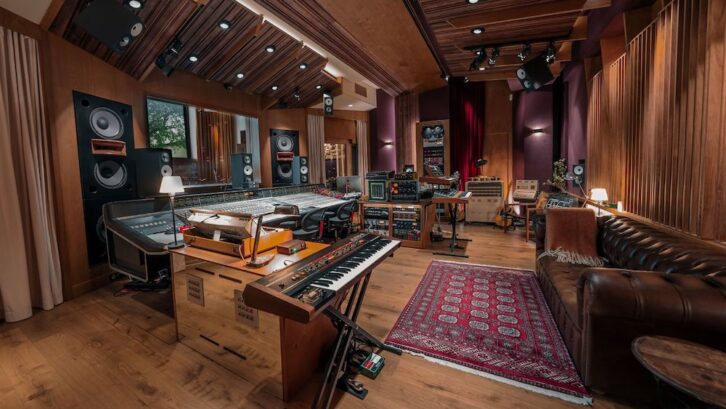
Paris, France (September 28, 2023)—The new Mix with the Masters flagship facility in Paris, Rue Boyer, incorporates acoustical solutions developed by REDIacoustics that enable it to function as a production studio, a teaching space or a convertible live room.
When co-founders Maxime Le Guil and Victor Lévy-Lasne began planning for their new flagship location in Paris with studio designers WSDG (Walters-Storyk Design Group), one of the requirements was a multi-purpose, full-featured studio control room. The group brought on the REDIacoustics team, who utilized their AI-powered NIROTM (Non-Cuboid Iterative Room Optimization) software.
Control Room A’s 48-square-meter (515-sq.-ft.) space was designed to serve multiple purposes. In addition to meeting the typical requirements of a high-end studio control room, the space also needed to be adaptable as a workshop space that can fit up to 20 Master Class attendees, or—with its vintage SSL 400 console safely dropped into the floor via an elevator system—a live room that can fit a full band. Unable to alter the basic shape of the room, which is in a vintage two-story residential building, the REDIacoustics design team had to explore other options.
“The acoustic requirements of any one of these types of spaces are quite demanding,” explained REDIacoustics senior acoustic engineer Rinaldi Petrolli. “In order to maximize it for all three uses, we needed a way to quickly test every available acoustic treatment possibility to control the low-end frequencies of the room with all of these variables taken into account. These kinds of situations are exactly what our team designed NIROTM for.”
Review: NIRO (Non-Cuboid Iterative Room Optimization )
The final design consisted of 17 acoustical treatments, including various configurations of Helmholtz resonators, porous absorption, porous absorption over resonators, high-frequency diffusers and broad bandwidth modulated diffusers, Petrolli explained. The REDIacoustics team utilized a 1.3 meter-deep Helmholtz resonator below the SSL console that can be removed from the equation when it is dropped for the live room configuration.
The team also devised an array of subwoofers—designed and built by loudspeaker manufacturers Symphonic Acoustics—placed around the room to balance its low-end frequency response and optimize a larger listening area. “We used five strategically placed subwoofers to flatten the low-frequency response across the room, enabling the students sitting at the back of the room to have a pristine bass reproduction in all seating areas. It was a creative solution that would have been difficult to test without NIROTM,” he said.
“One could go onsite with actual speakers and physically test a lot of different positions—but given that this is a complex room with complex treatments, you could never try everything easily or quickly. With NIROTM, we were able to save time and budget by simulating all of this beforehand and thus come up with a more innovative solution that suited the client’s needs perfectly. What we simulated and measured matched perfectly with how the room sounded when it was completed.”
